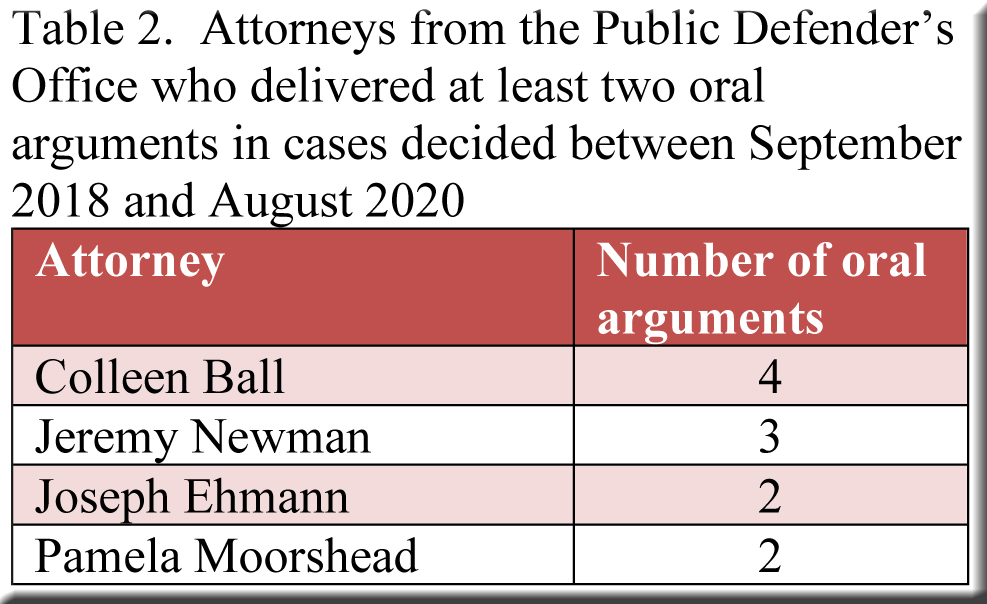A post toward the end of 2018 studied the attorneys who had delivered oral arguments at the supreme court over the past ten terms (2008-09 through 2017-18). Today, we’ll update these findings with a supplement devoted to the 2018-19 and 2019-20 terms—a period during which 177 lawyers presented one or more oral arguments.[1] Six of these advocates, shown in the following chart, appeared four times before the justices, while a total of 12 appeared at least three times, and 36 at least twice.
As one would expect, attorneys from the Department of Justice participated in more oral arguments than did their colleagues from other agencies or private firms. Of the 231 oral arguments delivered by the 177 attorneys noted above, 54 of these arguments (23%) were presented by advocates from the Department of Justice (45 arguments from the Attorney General’s Office and 9 from the Solicitor General’s Office). If we limit our focus to just the most active attorneys—those responsible for at least two oral arguments—the Department of Justice’s prominence is more striking still. Government and private lawyers in this category accounted for 90 oral arguments, and 41% (37/90) of these arguments came from the DOJ’s attorneys (Table 1).[2]
Following the DOJ’s legion, the next most frequent participants came from the State Public Defender’s Office, whose attorneys accounted for 27 (12%) of the period’s 231 oral arguments. Unlike the lawyers from the DOJ, however, those who performed on behalf of the Public Defender’s Office were not concentrated among the advocates who surfaced most recurrently in our data. Thus, when confining our attention to public defenders who delivered at least two oral arguments (Table 2), we find that they presented 11 of the 90 arguments from lawyers responsible for two or more—a 12% share—the same as the Public Defender’s share of all 231 arguments. In other words, most public defenders who conducted oral arguments appeared before the justices only once during the period under consideration.
The grand total of 177 attorneys introduced in the opening paragraph includes 126 that we’ll place in a catchall “private firm” category because most came from several dozen private law firms (along with a handful of nonprofit entities and government agencies). These 126 lawyers accounted for 150 (65%) of the 231 arguments in our total—an impressive sum, but one that also reflects the fact that a substantial majority of these attorneys participated only once. When we filter this group of 126 lawyers for those who delivered at least two oral arguments, we find that just 18 make the cut (Table 3), and their portion of oral arguments among all attorneys with two or more—47% (42/90)—is well below the 65% share, noted above, for all 126 “private firm” lawyers.
The original 2018 post concluded with a table displaying the percentages of oral arguments delivered by women in each of the three tables above. Pronounced indeed were the differences then—and they have remained so thereafter, as detailed in Table 4.
[1] The following tables cover cases decided during the two terms under consideration (that is, from September 1, 2018, through August 31, 2020). They include a handful of oral arguments given on behalf of amicus parties and oral arguments in two cases from 2019-20 that were later dismissed as improvidently granted. If two lawyers split an oral argument between them (a rare event), both lawyers are credited.
[2] Misha Tseytlin, the former Solicitor General, delivered three oral arguments during this period. However, he was listed as an attorney at Troutman Sanders in the court’s decisions—the firm that he joined after serving as Solicitor General.





Speak Your Mind